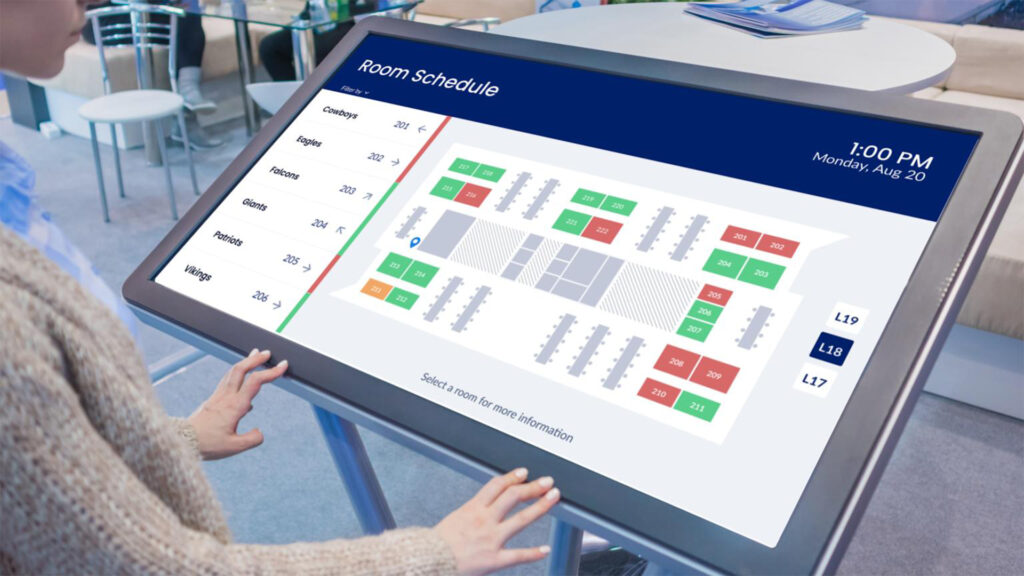In the dynamic landscape of modern workplaces, effective utilization of resources is crucial for enhancing productivity and efficiency. One such resource that plays a pivotal role in optimizing workflow is space. With the advent of technology, traditional methods of managing office spaces have given way to sophisticated solutions, and room scheduling system have emerged as indispensable tools for organizations seeking to streamline their operations. In this article, we will explore the evolution of room scheduling system, their key features, and the profound impact they have on contemporary workspaces.
Evolution of Room Scheduling Systems
The concept of room scheduling is not a new one, but the tools and technologies used for this purpose have undergone significant transformations over the years. In the past, manual methods, such as paper-based calendars and whiteboards, were commonly employed to manage room bookings. However, these methods had limitations, including the potential for double bookings, difficulties in updating schedules in real-time, and challenges in coordinating across large organizations.
The advent of digital technology paved the way for the development of electronic room scheduling systems. Early versions consisted of basic software applications that allowed users to input room bookings and view schedules on a computer. While these systems represented a leap forward in terms of efficiency, they were often standalone solutions with limited integration capabilities.
As technology continued to advance, modern room scheduling systems evolved into sophisticated platforms that leverage the power of the cloud, IoT (Internet of Things), and AI (Artificial Intelligence). These systems now offer seamless integration with other workplace tools, enabling organizations to create holistic solutions for managing their spaces effectively.
Key Features of Room Scheduling Systems
Real-time Scheduling: One of the primary advantages of modern room scheduling systems is their ability to provide real-time information. Users can instantly check the availability of rooms, make reservations, and receive updates on any changes to the schedule. This feature eliminates the risk of double bookings and enhances overall transparency within the organization.
User-friendly Interfaces: Today’s room scheduling systems typically feature intuitive and user-friendly interfaces. Employees can easily navigate the system, view room details, and make bookings without the need for extensive training. This accessibility contributes to the widespread adoption of these systems across different levels of an organization.
Integration with Calendar Systems: Integration with popular calendar applications, such as Microsoft Outlook and Google Calendar, is a standard feature in modern room scheduling systems. This ensures that room bookings seamlessly align with employees’ existing schedules, promoting a cohesive and synchronized workflow.
Automated Reminders and Notifications
Automated reminders and notifications help keep users informed about upcoming meetings or events. This feature reduces the likelihood of no-shows and ensures that spaces are utilized efficiently. Additionally, it contributes to better time management within the organization.
Resource Utilization Analytics
Many advanced room scheduling systems come equipped with analytics tools that provide insights into space utilization. Organizations can leverage these analytics to identify trends, optimize resource allocation, and make informed decisions about future space planning.
IoT Integration for Smart Spaces
Some cutting-edge room scheduling systems integrate with IoT devices to create smart, connected spaces. Sensors can detect occupancy levels, temperature, and other environmental factors, allowing organizations to further optimize their spaces based on real-time data.
Impact on Modern Workspaces
The implementation of room scheduling systems has had a profound impact on the way modern workspaces function. Here are some key areas where these systems have made a positive difference:
Enhanced Efficiency: Room scheduling systems significantly enhance the efficiency of space utilization. With real-time updates and seamless integration with employees’ calendars, organizations can ensure that meeting rooms and collaborative spaces are used to their full potential.
Time Savings: The automation features of room scheduling systems save employees valuable time. Tasks such as finding available meeting spaces, sending out invitations, and managing last-minute changes are streamlined, allowing employees to focus on their core responsibilities.
Cost Optimization: By gaining insights into space utilization patterns, organizations can identify opportunities to optimize their physical workspace. This can lead to cost savings by reducing the need for excess space, preventing unnecessary expenditures on facilities, and promoting a more sustainable approach to resource management.
Improved Collaboration
Room scheduling systems facilitate improved collaboration by providing employees with the tools they need to seamlessly book and manage meeting spaces. This, in turn, fosters a more collaborative and communicative work environment.
Flexibility and Adaptability
In the era of hybrid work models and flexible schedules, room scheduling system offer the flexibility needed to adapt to changing work dynamics. Employees can easily book spaces for in-person or virtual meetings, ensuring that the organization remains agile in responding to evolving workplace trends.
Employee Satisfaction
A well-implemented room scheduling system contributes to overall employee satisfaction. By reducing the frustration associated with finding available meeting spaces and minimizing disruptions caused by scheduling conflicts, these systems create a more positive and conducive work environment.
Conclusion
Room scheduling system have evolved from basic electronic calendars to sophisticated, integrated platforms that play a vital role in optimizing workspace management. The adoption of these systems represents a commitment to efficiency, transparency, and adaptability within modern organizations. As technology continues to advance, we can expect further innovations in room scheduling systems, contributing to the ongoing transformation of the way we work and collaborate in the contemporary professional landscape.







